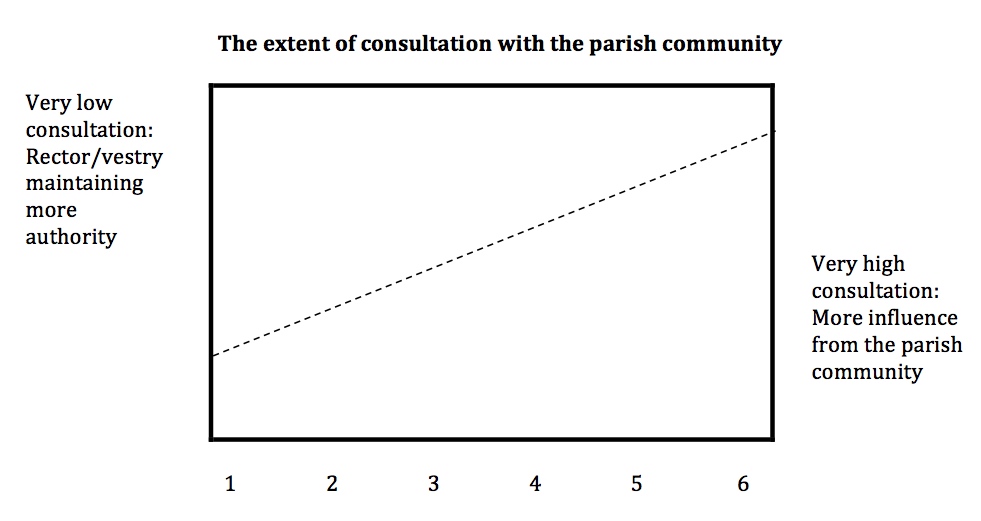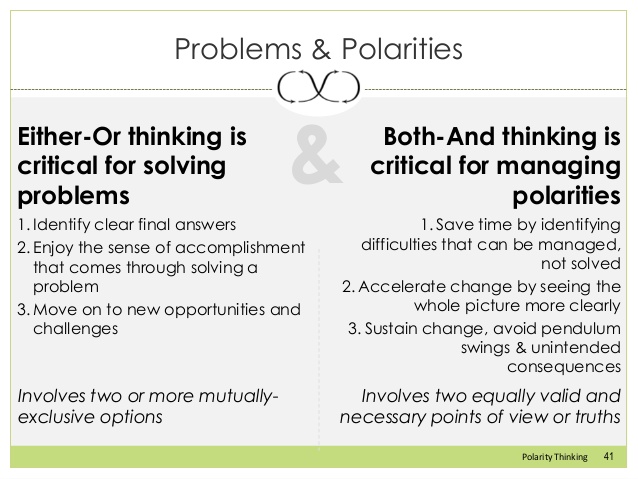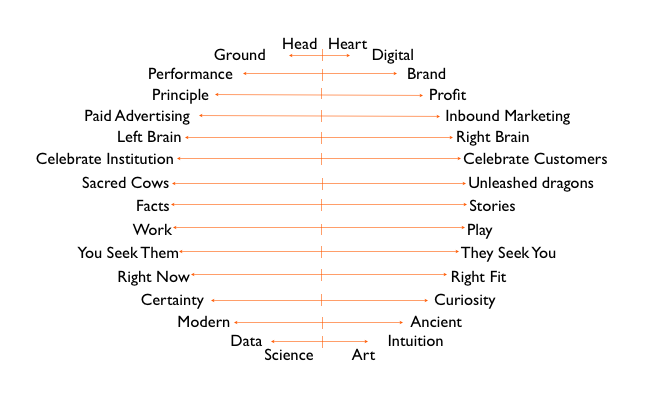Managing a decision-making polarity
 Monday, January 23, 2017 at 12:28PM
Monday, January 23, 2017 at 12:28PM  There are two mistakes frequently made in parishes involving how we manage one polarity of decision making.
There are two mistakes frequently made in parishes involving how we manage one polarity of decision making.
One error we make is by airing every idea that floats about in the parish with everyone else in the parish. This is likely to produce anxiety and confusion which are enemies of real transparency and inclusion. At the moment we seem to be experiencing that approach at the highest levels of government.
The second mistake we make is to hold the formation of projects and ideas too tightly among the rector and vestry. This approach usually involves the almost complete development of a project before bringing it to the attention of the parish community. This is likely to reduce trust, generate defensiveness, especially on the part of those who have now developed an investment and ownership of the project, and cause unnecessary agitation and conflict among parishioners.
Both mistakes tend to produce a less owned and less successful project. They are also likely to draw the attention of members away from their primary baptismal ministry into the institutional workings of the parish.
Our Benedictine roots can help us here
We might follow Benedict's advice to consult with the whole community about important matters and have smaller groups for other acts of consultation.
Whenever anything important is to be done in the monastery, the abbot shall call the whole community together and explain what the business is; and after hearing the advice of the brothers, let him ponder it and follow what he judges the wiser course. (Rule of Saint Benedict Chapter 3:1-2)
Structures and processes that rise from a Benedictine spirit and are sound acts of oversight.
- Post the minutes of the vestry meeting quickly
- Have open vestry meetings and reinforce the message of openness
- Accept that in a healthy parish few people from the broader parish will attend the meetings or read the minutes
- As rectors have the responsibility and authority to launch initiatives apart from the vestry, wise rectors will find ways to share their thinking as ideas take shape and before they are fully formed.
- Rectors and vestries are wise to draw on individuals with expertise in various fields related to issues and initiatives being developed. Think about expertise both in terms of content and process.
- Rectors are wise to have a very small “council of advice” apart from the vestry. Use people that bring special skills and knowledge related to parish dynamics and ministry. They may have special training and experience or simply be among the wise ones of the parish.
- Learn how to use testing processes early in the decision-making process – use both with the congregation at large and members of the vestry. For more on testing processes and other means of facilitating transparency and inclusion
How much consultation?
Have the vestry explore what it considers to be the needed degree of consultation with the larger parish community Here’s a resource on that.

 A process
A process
Here's an example of a process that balances transparency with maintaining appropriate lines of authority and accountability ;and broad inclusion with expertise and responsibility. We are trying to avoid sharing ideas that are colorless and dull while also avoiding being opaque and muddy. Think -- straightforward, direct, and lucid; timely, trusting and engaged.
1. Every six months or so have a process within the vestry in which it generates and discusses all the current ideas members have about improving parish life and ministry. Have the vestry establish priorities among all the ideas. This allows us to keep control over how use our time and gives us a sense of priority among those various offerings.
2. Once there is a sense of initial prioritization, the vestry and rector can decide which of those items is likely to be of interest to the broader parish community. These should carefully selected. If we select too many items that is usually a way of avoiding our responsibility to lead. We don’t want to draw the attention of most parishioners away from their own primary ministry and into the institutional life of the parish.
3. Engage in a testing process with the broader parish. This calls for some judgment about whether the issue at stake can be dealt with by online and quick survey methods or more effectively by face-to-face gatherings, probably at the coffee hour of each congregation within the parish. The testing could be as simple as a spectrum or involve more by asking people to use likes wishes and concerns
4. It’s important to report the overall results of the testing back to the whole parish and make a clear statement about next steps. Let people know when something additional might be brought to the attention of the parish community.
rag+
Related resources
 Benedictine Spirituality
Benedictine Spirituality
Benedictine spirituality and the parish church
A life, not a program
Caesura: Parish life lacking any sort of contemplative focus
Caesura: Levels of consulting in the parish
Caesura: Methods for “taking counsel” ..... Part One
Caesura: Grumbling and taking counsel in the parish community
 Managing paradox, contradictions and all the good ideas
Managing paradox, contradictions and all the good ideas
Look on in wonder and silence
All the good ideas
Esther de Waal's Living with Contradiction. It's her exploration of Benediction spirituality and how it is used by some to live with stability and integrity in a complex world. A world that is loaded with contradictions and often bad choices.
Polarity images are from this site